With an impending publication and a constantly evolving practice, Bernard Trainor has a slew of interesting works in the pipeline. Bernard’s diverse background involves practicing in Australia and Great Britain, subsequently starting his own practice in San Francisco, California. His interest in the California landscape aesthetic continues to inspire others and create thought-provoking spaces. More after the jump…
How did you discover the profession of landscape architecture?
I really started as an apprentice gardener with my hands in the soil – this was extremely hard work and not particularly glamorous but it has made me aware of the climate, sites, and soils. What works and what does not has different consequences regarding my effort with a spade in my hands so this knowledge became a driving factor in my design work.
How would you describe your firm philosophy?
We look to the local identity and context, then create a simple and honest expression that relates to the place, the people, and the buildings. It sounds simple but the hard part is distilling down the information to appear as if there was no effort visible.
What inspires you and your work?
I would say natural environments are the biggest influence – just getting out there and feeling the power of a place that has evolved over many many years. I am enamored by the specifics details of a place that have essentially come about through necessity to survive. I find these patterns very beautiful when something is that way because it has to be.
Who inspires you?
I get to collaborate with some brilliant design minds on the teams for projects. Often I just sit and think how lucky to be at the at the table with these people – to be there to listen, strategize, and act on great ideas as a collaborator.
The people in the studio really come with creative ideas and a drive that constantly makes my mind tick, tick, tick, every hour of every day. They inspire me.
My daughters really blow my mind in how creative they are. There are moments where I think they are so far advanced in their thinking than I ever was. I enjoy watching them. This liberates me from the rut you can get in as an adult trying to be creative amidst all the rules and regulations we face every day.
You have a book that’s set to hit the bookshelves in April of this year. What do you wish for readers to gain most from this publication?
There is so much love that goes into the work by so many people over long periods to make these landscapes reality…I just want people to see the artistry of the design and the efforts of the many hands that touch the work.
It is really a privilege to have people allow us to shape the land they live on. I do not take this lightly and I hope this comes through in the work in the book.
How do your hobbies influence your work?
I think some of my favorite places to be is where the ocean meets the land – that meeting is where there is so much energy and influence in the patterns of water and land, tide and waves, rock and dunes, and so on. With this I enjoy water sports like sailing, surfing, kayaking, and perhaps, most all, just walking on a rocky beach. I feel best when I am around this force of land and water.
Your favorite place in the world is __________.
There are a few very special spots where I grew up on the Mornington Peninsula in South Eastern Australia, in particular a somewhat secret surfing spot called Central Avenue. Part of my memory of this place is that I had to scramble through the coastal dunes covered with Leptospermum’s and Banksia’s to get to the beach. This journey left a huge imprint on me in retrospect. This region is made up of some rugged coves and beaches around the small town of Blairgowrie – Just so many memories of being washed around on that southern coast trying to survive the surf!
So yes the Mornington Peninsula is a favorite…
If you weren’t a landscape architect, you would be a ______________.
I have always thought I could be a sculptor or a painter – even though I have no experience in this arena, I have a deep belief I could contribute something worthy in this area. I would work in a contextual, site specific way close to the land – I feel this is often missing from the work in the arts.
The other thing that I really am attracted to is stone, so maybe I would be a stone mason if I could survive the back breaking aspect. Stonemasons have my complete respect in the same way a great plants person does.
Plant personification time! If you were a plant material, you would be ________.
I would like to think I would be well shaped Manzanita in California or a nice tangled tea tree in Australia. I guess this is what I aspire to be in the plant world…
Even though you did not ask I would be happy to be a simple space covered with 3/8″ gravel if I were a hardscape material – Pretty sure of that.
So…maybe I am the manzanita growing out of the gravel? That about sums me up!
Where would you like to see the profession go next?
I have to say I think the change I have seen over the course of my career has been encouraging. Things have been moving along in a positive direction. This may be specific to my experience in that I work within a certain circle of solid practitioners. The mind set has shifted away from the chemicals, the lawns, and english garden lust in hot climates and over to a more regional and grounded approach to gardens. I am a proponent of celebrating where you live and I am seeing this from the best designers working for a more sophisticated clientele. The interesting work is not primarily budget-specific but it is being done by a group of thoughtful people who are aware of their place and happy to celebrate the local identity.
Please feel free to leave a comment below and share the interview on facebook and twitter… Thanks for reading!
Published in Blog







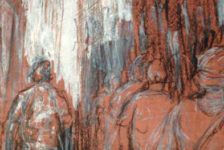
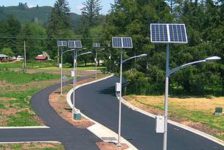
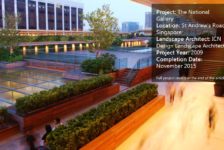
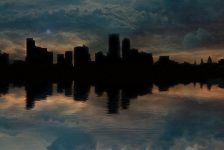
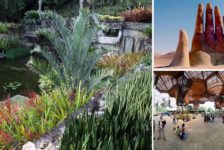

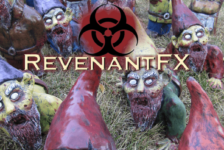
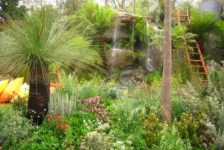

Andrew Spiering
Great interview, Jessica! I’m a huge fan of his studio’s work…
Brandon Reed, CVO, ASLA / Rooftop and Urban Designer / Landscape Architect
This is fantastic. I have been inspired by Bernard Trainor for years and think he is a genius in the arrangement and design of outdoor space and how he blends that with the built environment.
It is great to get a more in depth view of his personality and what inspires him and a glimpse of what inspired him to arrive at where is currently is.
Great interview Jessica!
Can you please interview Raymond Jungles? He is also an inspiration.
Jessica Wolff
Brandon – Raymond is on the list! Thanks for your comments!
Elizabeth Matz
BT&A’s studio is actually located in Monterey which is a quite a bit south of San Francisco. 🙂